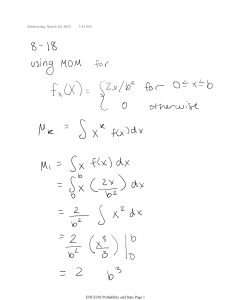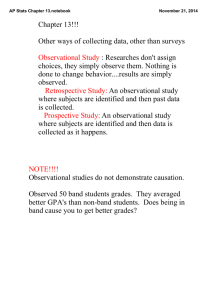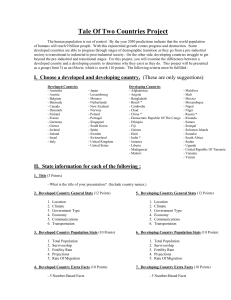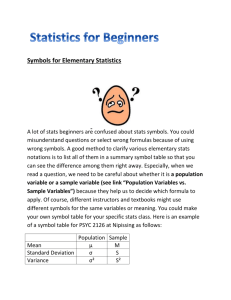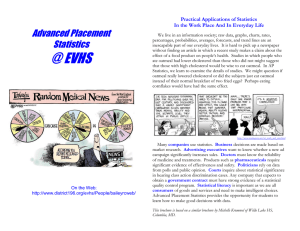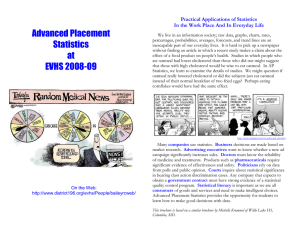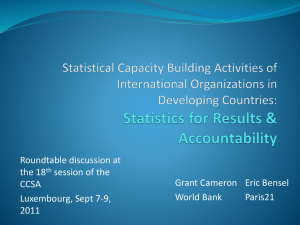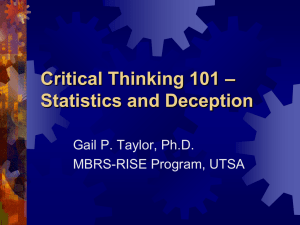ChP.Notes - StatsMonkey.
advertisement
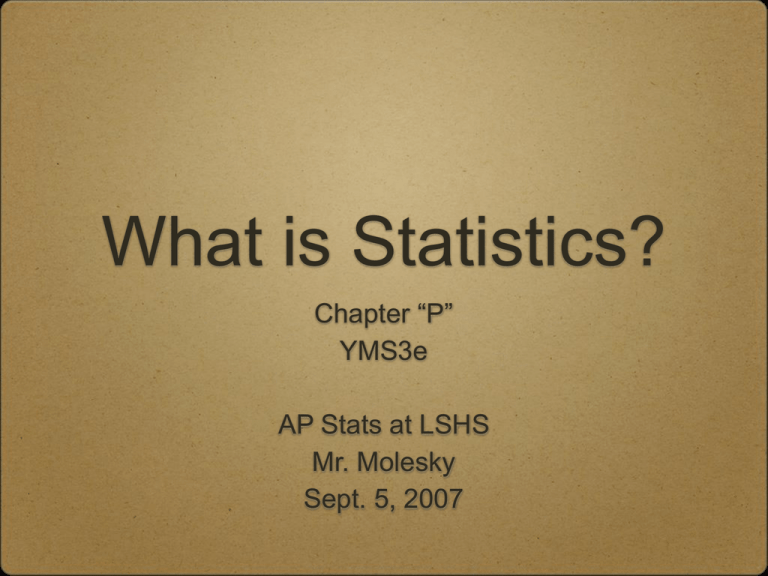
What is Statistics? Chapter “P” YMS3e AP Stats at LSHS Mr. Molesky Sept. 5, 2007 Case Study Can Magnets Help Reduce Pain? Read the study on page 3. What do you observe? Does there appear to be a difference between the reported Active and Inactive pain scores? Can we “condense” the data? What can we calculate to simplify things? What do you observe? Is this difference large enough to argue that magnets are effective in reducing pain? Is this difference due to chance variation, or is it evidence of a real difference? Intro: What is Stats? Statistics: The science (and art) of learning from data. Data: Numbers with a contextual meaning. We use data and Statistics to draw conclusions about a population based on sample information. Data/Statistics Population Sample Inference/Conclus ions 4 Themes of Stats Part I: Exploratory Data Analysis The tools and strategies for organizing, displaying, describing, and analyzing data. Part II: Producing Data Designing surveys, experiments, and observational studies that will yield the data necessary to answer a question of interest. Part III: Probability The study of chance behavior. How likely are certain outcomes? Part IV: Inference Draw conclusions about the population based on samples. Test claims and compute estimates. II. Data Production When answering a question, where the data come from is important. Data beat personal experiences (anectodal). Data Sources Available Data Surveys Observational Studies Experiments Do P.1-P.5 on page 11. I. Data Analysis Organize, Display, Summarize, and Interpret Individual: Objects described by data Variable: Characteristic of an individual Categorical: Places individuals into groups Quantitative: Numeric measures Distribution: Values taken on by a variable and how often it takes those values. I. Data Analysis When analyzing data, ask the following: Who are the individuals being described? What are the variables? Why were the data gathered? When, where, how, and by whom were the data produced? Read pp 12-18, Do 7,9,11,12 III. Probability Long-term chances of an event occuring Chance behavior is unpredictable in the short run, but has a regular, predictable pattern in the long run. Consider flipping a coin, rolling dice, etc. We use probability to determine how likely certain sample values/statistics are. We want to know, “Is this value likely to be due to chance?” See Example P.10 Statistical Thinking Data come from real-world contexts... Doing statistics means more than just manipulating data! Form the habit of asking “What do the data tell me?” Statistics involves a lot of calculating and graphing. We’ll let our calculator/computer do most of this. However, ideas and judgments can not be automated! You learn statistics by doing statistical problems! Read Chapter P, Do 13-16,18
